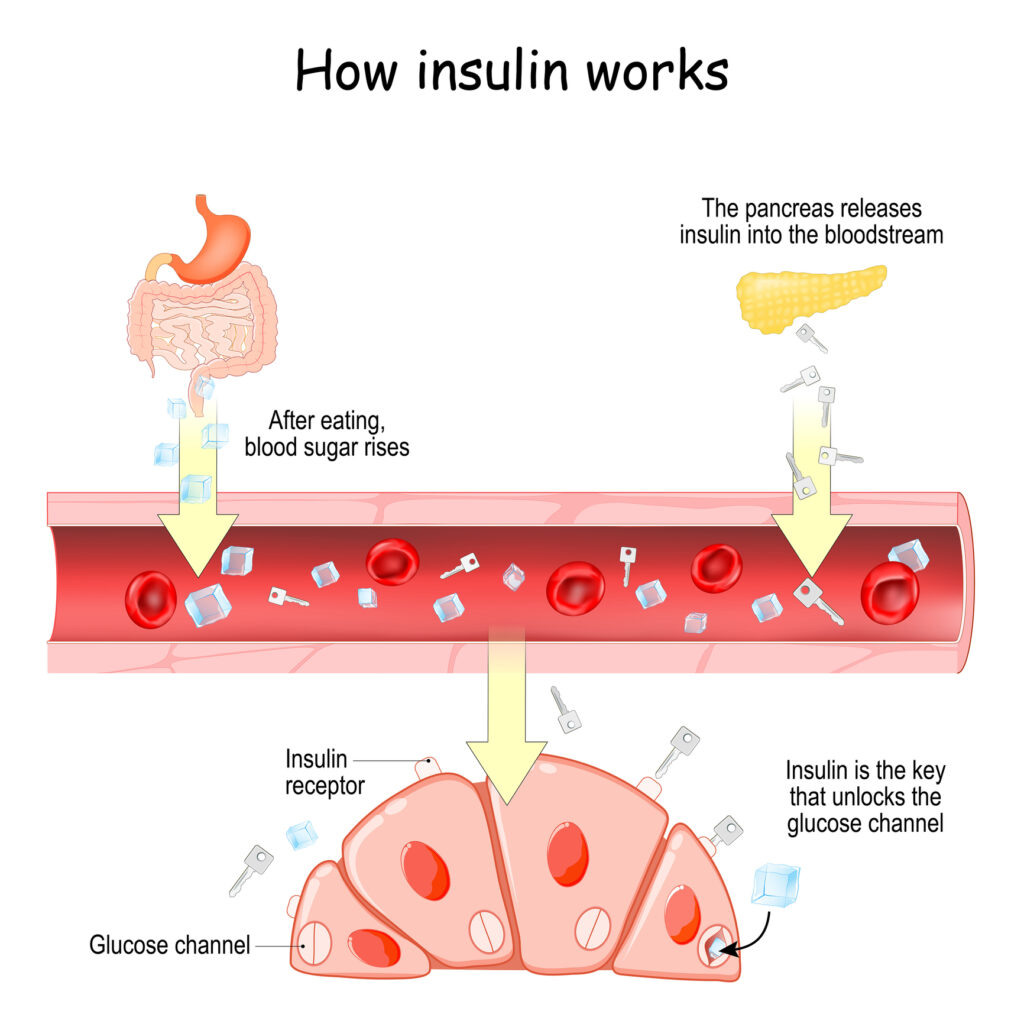Do you know what it means to have insulin resistance and why one would want to increase their insulin sensitivity? Insulin resistance is when your cells are resistant to the effects of insulin, a hormone produced by the pancreas that regulates the amount of glucose in the bloodstream. Insulin’s job is to bring glucose into the cells where it is needed, so it can be used for energy. When your cells become resistant to insulin, this causes your blood sugar levels to rise and stay elevated. Insulin resistance is associated with metabolic syndrome, type II diabetes, and Polycystic Ovary Syndrome (PCOS). If you have insulin resistance, your goal should be to increase your insulin sensitivity, which describes how sensitive your cells are to the effects of insulin. The goal is to require smaller amounts of insulin to be able to lower your blood glucose levels.
 1. Eat a Balanced Diet
1. Eat a Balanced Diet
This may seem like a no-brainer, but it’s still important to mention. Eating a balanced diet according to your metabolic type will be the most important thing you can do to increase your insulin sensitivity. Chronic blood sugar spikes lead to insulin resistance, and eating balanced meals with appropriate ratios of macronutrients will help keep your blood sugar levels nice and steady.
2. Increase Your Fiber Intake
Dietary fiber has been shown in studies to have beneficial effects around improving insulin secretion and increasing insulin sensitivity. Foods that contain dietary fiber include fruits, vegetables, and complex carbohydrate sources, such as whole grains, legumes, nuts, and seeds. It’s best to avoid simple carbs like added sugar, and sources of carbohydrates that don’t contain adequate fiber, but just remember, not all carbs are the same. You don’t need to eat an extremely low carb diet to reverse insulin resistance. If you focus on consuming complex carbohydrates, you will increase your fiber intake, which will help increase your insulin sensitivity.

3. Exercise
Both aerobic exercise and strength training are beneficial for increasing your insulin sensitivity. Muscle contraction activates glucose transport. When we exercise, our bodies burn glycogen, a form of glucose that is stored in our muscles. After exercise, our bodies then replenish those glycogen stores from glucose in the bloodstream. When we are burning glycogen during physical activity, our body’s insulin sensitivity is improved.
4. Get Adequate Sleep Each Night
Sleep deprivation is linked to insulin resistance. If you are trying to improve your insulin sensitivity, one of the best things you can do is make sure you get adequate sleep each night. Even if you are doing everything else right with exercise and diet, you may not see the results you want if you aren’t getting enough sleep. This is because lack of sleep induces a stress response in your body, which increases your blood sugar levels and reduces insulin sensitivity. Aim for at least 7-8 hours of quality sleep each night.

5. Use Helpful Herbs and Spices in the Kitchen
There are many culinary herbs and spices that can help lower blood glucose levels and increase insulin sensitivity. Some of these include:
- Turmeric
- Fenugreek
- Cinnamon
- Cayenne
- Nutmeg
- Dill
- Cumin
- Ginger
